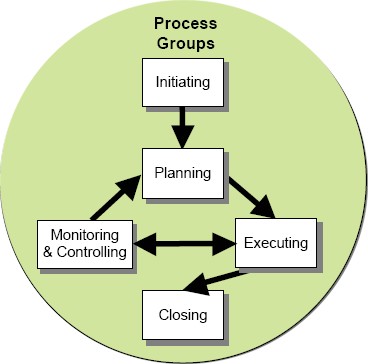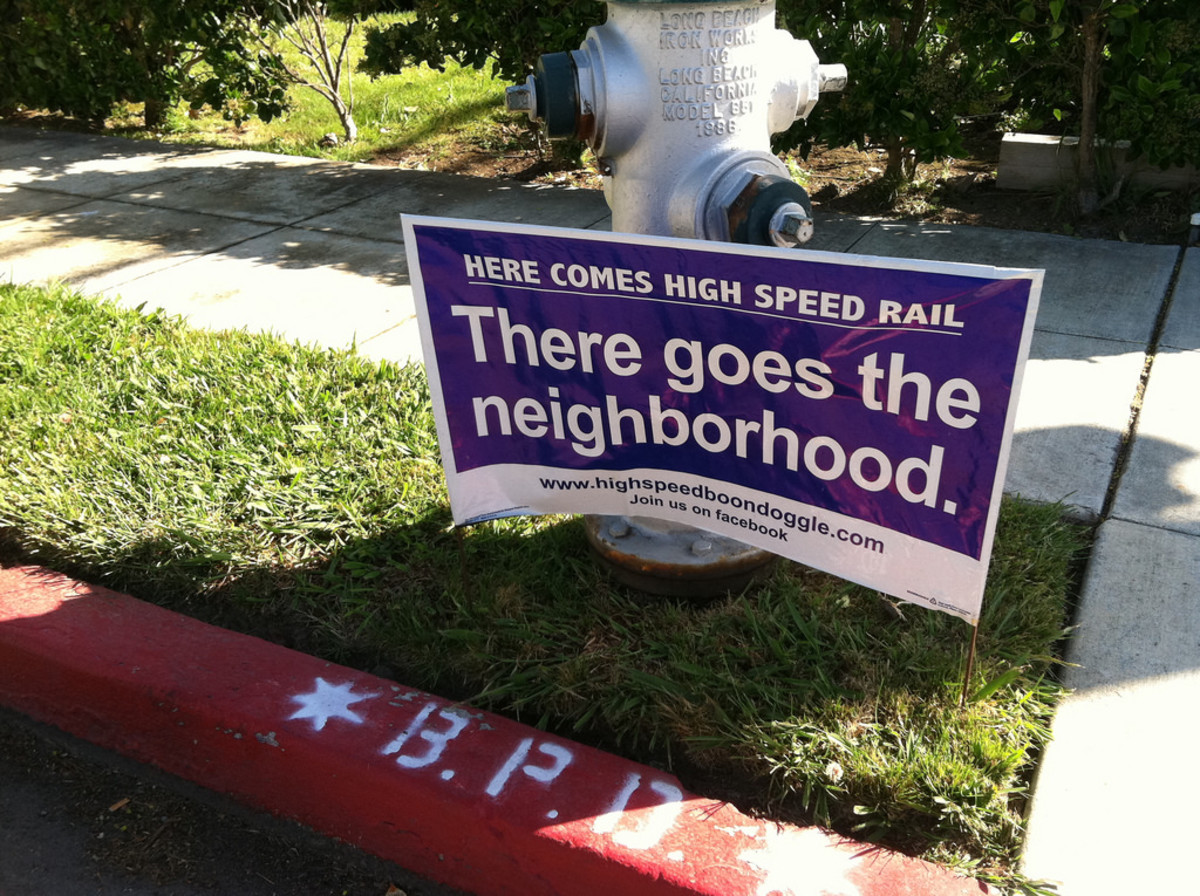What's the Point in Having a Process in Project Management?

Resolving a Problem Requires Direction
If you were to take all of the project managers in the world and line them up end to end they’d all point in different directions.
Anyone who has spent any time managing a project for a company knows that there are several different ways to run a project successfully. However, there are certain projects that require the same goal over and over again. No project manager, once they find a project that they have to repeat, takes a new different path – provided that the last attempt was successful. If the last attempt were a complete disaster, then you would need to examine the events of what happened and figure out a more efficient way of doing things.
When repetitive projects evolve new processes evolve with them. The more important the project, the greater the need is for governance. When that happens, project managers must fall back on a process model that works. This goes for almost every method out there.
I’ve been working in the Information Technology (IT) world for over twenty years. I’ve had roles ranging from Help Desk Support to SLA Reporter to QA Tester to Web Designer and, eventually, Project Manager. What I’ve discovered is that when things become “mission critical” there is a greater need to follow a working process and develop a process model that uses the discipline of reporting, communication, and collaboration as the backbone of getting things done.
There is a need to establish accountability and in that accountability there is a natural tendency to put more care in assigned tasks and deadlines.
Recently, I was part of a project that went horribly awry. While it is possible to have a perfect storm of calamities that can happen to any project manager, it takes a certain amount of cavalier carelessness and lack of commitment upon the PM’s part to make things turn into a powder keg of catastrophe. In this case, things were rushed without the natural safeguards that a process incorporates to ensure corporate governance. The end result was a web page published to the internet without the approval of the company’s legal department. The potential disaster might have caused millions of dollars in damages should some person actually think of taking a law suit against the company.
This all happened because people in critical roles ignored the process or simply weren’t aware of it.
Project Management on Amazon

How Do You Get Things Done?
I obsess about things. It’s not one of the better facets of my personality. But, hey, what can you do?
I sat back this weekend after replaying the week’s events in my head. The big question I had was “Why?” Why did this happen? While I was not the PM on this job, my experience questioned not only my part in the incident but also the parts of everyone else.
Then I asked myself how the problem could have been avoided.
I thought about this while I was getting ready for the day. I went downstairs and was about to feed the dogs when I found they had no dog food. It was still early and I knew that the pet store had not opened yet. So the dogs would have to do without until I got more food from the pet store. I got in my car and went to the grocery store instead. I picked up all of things I needed while it was early enough to avoid a crowd and then went to the pet store to pick up what I needed from there. I picked up enough dog food for the week and I also picked up stuff for the cats. I took the merchandise to the cashier, gave her my card member number for a discount, wheeled the stuff out to the car and brought the cart back to the store.
Then it hit me while I was driving home. I had just initiated and completed a simple project that morning.
In my effort to get my dogs food, I did the following:
- Identified a problem and consequences of not getting it done in time
- Took an inventory of my resources
- Identified the critical path
- Set milestones
- Executed the plan
- Exceeded the requirements
- Completed the tasks
The problem: My dogs were out of food. They have to eat or they will starve and get sick.
Tasks: Get dog food for the week and get some stuff for the cats.
Obstacle: The store is not open yet. What can I do to make the most of my time until the store opens? Get the groceries done.
Required gatekeeper: The cashier who needs payment before I can take my dog food to the car.
Last step: Bring dog food to the car.
Exceeded requirement: Bring back the cart so some other customer can use it, making me “not a jerk”.
I could not ignore any of the steps that I took. If I went to the store too early and tried to get my shopping done, I’d be arrested for breaking and entering. The alternative would be wait around and not be as productive as I could be while shopping for things at the grocery store.
I could buy stuff for the cats at a store that opened earlier and not buy dog food (as that store did not sell the specific brand I needed) or I could wait around until the pet store opened and push my timeline out - which would have been inefficient.
I could not bring my merchandise to my car without going through the gatekeeper cashier – else it’s stealing and the police would arrest me for shoplifting.
I could have just gone home with my stuff and left the cart in the lot – but I decided to go the extra mile and not be a jerk by returning the cart.
The plan and process could be repeated anytime I’d woken up on a weekend morning without dog food. The process was effective and efficient. As I was a team of one, I didn’t need to attend a meeting with another person to ensure that I was on the same page. However, if there were more than one task that could be done in tandem, I could get on my cell phone call on another person as a resource, check for their time and availability, and tell them what I needed from them. If they did what I asked, I'd be free to concentrate on the critical path.

Have you ever managed a project for work?
What Makes a Successful Process in a Project?
In this exercise we can extrapolate all of the things we need to know in order to execute a successful project.
I didn’t have to write any of my steps or submit a project plan. I could have, if it were more complex and keep the notes to remind me what I needed to do, but I didn’t have to, because I was aware of all the steps I needed to complete.
These are the habits I recommend to anyone who needs to run a project. There could be more, but this is what I think are good rules of thumb.
Identify all the stakeholders and team members. Get a budget. I find that projects go best when there is communication early and often.
Identify risks and do your best to circumvent problems.
Formulate a plan or process – or research your company’s proper plan or process (Most of the time there is an official procedure on what needs to be done). Identify milestones and acknowledge when you pass them.
Make sure everyone knows what they’re set to accomplish. Confusion on anyone’s role or responsibility can bring disaster to any project. Invite questions at any time.
If there are multiple members of the project team, issue a project plan that identifies what the contingencies are and when their deliverables are due.
Get sign offs from all stakeholders. If the product is to be tested, then the lead tester should sign off on the fact that he’s thoroughly tested the product and has either found no defects or has found defects and that the client should be aware of them before proceeding.
Ensure that the plan is not only followed but also that the process is obeyed. This is done by explaining to the team what the consequences are if they are ignored or skipped.
Lastly, when everything is over, get a sign off from the client and go over how the process could be improved and identify lessons that were learned.
Final Words
Every project manager has their own way of doing things.
Some are good and some are not so good. If you know what you’re doing and you know what you’re trying to accomplish, the task becomes academic and a matter of knowing the lay of the land. Each company comes with their set of policies and have their own set of gatekeepers.
Admittedly, some gatekeepers are completely unnecessary. However, it is not your job to decide what gatekeepers are necessary and which are not. Your job is to get the job done. You are not there to advocate of condemn any corporate policy. Your job is to manage your project and do things properly.
I have often found that the more progressive versions of project management – the Agile approach – is really effective. The project manager is called a Scrum Master. This comes from the Rugby term. His job is to keep other people from keeping his team from doing their job. His assumption is that his team knows what they are doing and he does his best to keep out of their way. All he needs to do is keep abreast of their progress.
The techniques are based on the example of ants.
Ants come to a picnic and know that there are crumbs and bits of food that they can take back to their anthill. All the ants know what they are doing and they follow each other back to the anthill. They are not managed, they simply know what they are doing, and they do it. No one is coordinating them.
It is the ability to identify a natural process and follow it. They will get it done when they get it done.
I do believe that there is a place for a project manager in any major task – if only for the reason to ensure that all of the safeguards are obeyed and that responsibility is taken for the success or failure of an initiative. However, with that logic in mind, no corporate project is one person and successes as well as failures are to be shared across the board.




